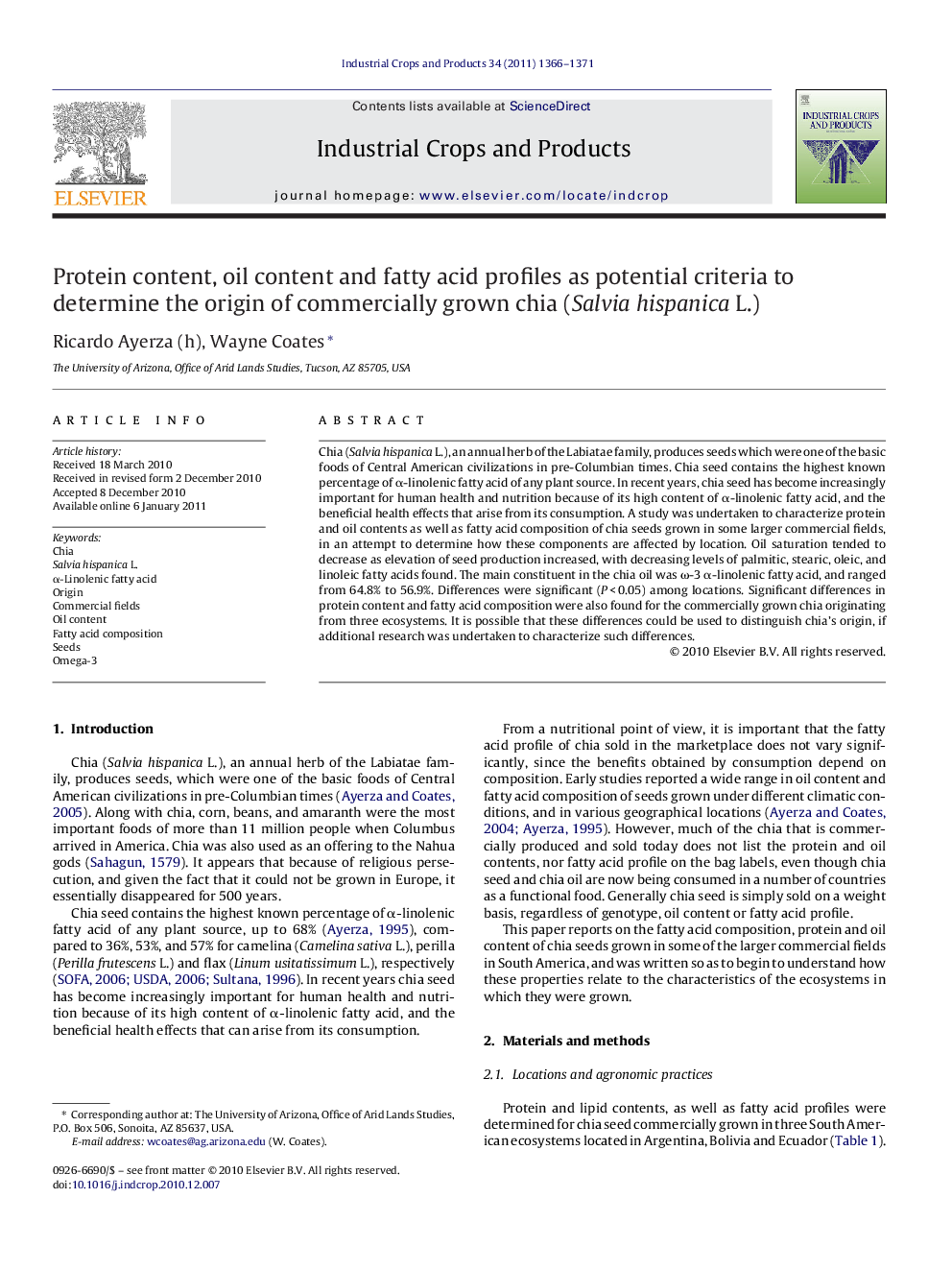| کد مقاله | کد نشریه | سال انتشار | مقاله انگلیسی | نسخه تمام متن |
|---|---|---|---|---|
| 4514453 | 1322210 | 2011 | 6 صفحه PDF | دانلود رایگان |

Chia (Salvia hispanica L.), an annual herb of the Labiatae family, produces seeds which were one of the basic foods of Central American civilizations in pre-Columbian times. Chia seed contains the highest known percentage of α-linolenic fatty acid of any plant source. In recent years, chia seed has become increasingly important for human health and nutrition because of its high content of α-linolenic fatty acid, and the beneficial health effects that arise from its consumption. A study was undertaken to characterize protein and oil contents as well as fatty acid composition of chia seeds grown in some larger commercial fields, in an attempt to determine how these components are affected by location. Oil saturation tended to decrease as elevation of seed production increased, with decreasing levels of palmitic, stearic, oleic, and linoleic fatty acids found. The main constituent in the chia oil was ω-3 α-linolenic fatty acid, and ranged from 64.8% to 56.9%. Differences were significant (P < 0.05) among locations. Significant differences in protein content and fatty acid composition were also found for the commercially grown chia originating from three ecosystems. It is possible that these differences could be used to distinguish chia's origin, if additional research was undertaken to characterize such differences.
Journal: Industrial Crops and Products - Volume 34, Issue 2, September 2011, Pages 1366–1371